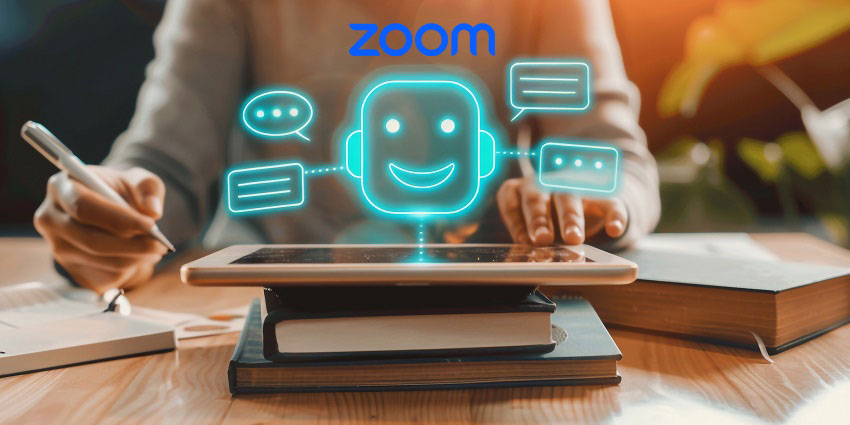Over the last couple of years, on-premises educational opportunities, classes, and training have been difficult to access. While most people found a workaround for the problems they faced, few did so effectively. Many ended up getting stuck with vendors and long-term technology contracts they weren’t 100% satisfied with, simply because they needed a solution quickly.
Now that we know for certain that the future of work will be more distributed and “hybrid”, companies and educators will need to rethink their strategy for ongoing learning and development.
I spoke with Toni Galo, the Cloud Solution Marketing Consultant for Alcatel-Lucent Enterprise, to gather ALE’s insights on how the development landscape is likely to change going forward.
What is the Current State of Training Technology?
I asked Toni about the current state of education technology, and how the ecosystem has changed since the pandemic began in 2020. His reply was that the situation is quite poor. Unfortunately, the majority of the market has not been penetrated by specialised learning and development software, and many companies are stuck using “repurposed” conferencing solutions.”
Toni told me: “Microsoft Teams and Zoom aren’t the best solutions for groups trying to create collaborative online learning environments with quality teaching experiences. These platforms were developed to cater to business professionals who wanted to stay connected on a day-to-day basis. They’re not appropriate for actively engaging students, and they don’t always embed into existing learning management systems.”
Alternatively, solutions on the market that are tailored specifically to reconstruct the real-life classroom or training landscape have an advantage because they were designed by teachers to be used by teachers. These platforms can be truly embedded into a learning management system to enhance it from within. While corporate conferencing platforms often claim to have native LMS integration, the truth is that schools still need to establish their connection from a third-party application.
According to Toni, “This stands in the way of true real-time synchronization between the conferencing platform and LMS, and doesn’t offer a persistent environment, which can lead to security breaches, lost information, and even unwelcome guests.”
What has the Pandemic Taught Us?
The pandemic has taught us how quickly and drastically things can change, often overnight. Toni believes that “There’s no time for complicated processes and assimilation. When the unexpected happens, people need to be ready. This is particularly true for larger schools and universities, as logistics and the organization of classes can feel practically impossible if you’re using the wrong tools.”
He recommends that every educational company and group in the world plan for the various scenarios that can now take place: from on-premises, to fully remote, to hybrid learning environments. If the current system in place can’t accommodate true synchronization and security without complex onboarding, then it just isn’t suitable.
“These days, groups need to ensure their learning platforms are suitable enough to both offer an integrated LMS and provide full LMS integration if you’re already using one. The solutions also need to provide you with the right tools to cover both remote and fully hybrid classes. Plus, these systems must be secure”
What are the Biggest Challenges Facing Educational Facilities?
ALE has found the biggest challenge for organizations is that they are using the wrong tools and have a steep learning curve because of it. There weren’t many specialized tools available when the pandemic started, so schools and universities often used what they already had access to or what they could get as part of a collective contract.
“It was very rare for any group to have a contingency plan in place. Even when one was available, none of the options educators had really gave them the tools they needed at the right time. However, because no-one could understand the scale of the situation, there really weren’t enough solutions available.”
Toni said that scepticism and lack of knowledge about digital tools also meant a never-ending list of problems when organisations began rolling out their latest technological acquisitions. Companies and educational facilities will need to ensure that they’re carefully considering the right educational tools as part of their long-term strategy to avoid the wrong investments.
How Can Companies Get the Best Educational Technologies?
Companies and schools alike need to find the right digital solution for education in this new world. There’s no going back to the way things were before the pandemic, so educational technology is a must-have. Schools and Organisations need to move away from communication platforms designed for business and look to more specialized solutions created specifically for remote learning.
According to Toni, “These groups need to start choosing solutions which won’t cause major headaches for teachers and instructors but give them the support they need to offer excellent education. Technology needs to get out of the way of professionals and support their work from the background.”
The right platforms for today’s needs will automatically synchronize all data from the LMS in real-time. Instructors and staff must be able to launch these applications from the LMS so that it serves as an “extension” to existing tools. This reduces the headache of onboarding and learning new tools.
“Your new learning platform needs to be a persistent and safe environment, encouraging collaboration between attendees, as well as interaction with the instructor. Instructors also need to be in full control of the classroom, which means utilizing classroom controls, including chat, video, file sharing, screen sharing or audio.”
To empower student success, ALE and Toni believe the future of educational technology must focus on solutions specifically designed for teaching and learning. Anything else won’t get the job done and may end up making learning a lot more difficult.







